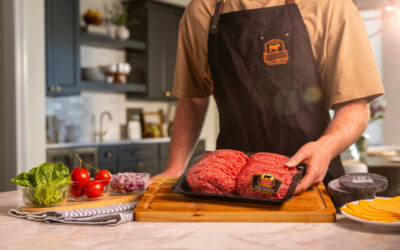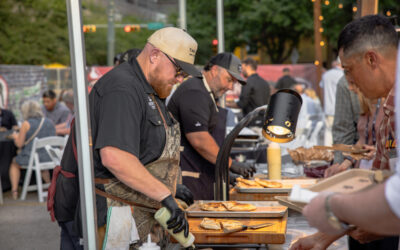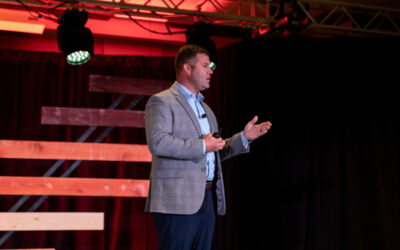
Beef’s a trip day 17: From here to there – and a lot more

They have to get to the right restaurant or retailer under the right conditions, at the right time to get sold.
These things don’t just happen. Today we’re shining the spotlight on foodservice distributors: the people who get those thousands of different products from the packer or further processor into the hand of chefs across the country.
These folks are charged with the task of physically getting the meat from here to there, but it’s a lot more than figuring out trucking schedules or sourcing logistics.
For one, distributors must correctly assess demand and they must help create it. They work on education and menu creation, they help smaller restaurants figure pricing and in general provide a lot of support.
They also do further-trimming and packaging work for all those who don’t cut their steaks in-house.
“Our job is to merchandise as much of that product as we possibly can. I’m not taking the whole tenderloin and cutting it end to end in 4-oz. portions. That would produce very inconsistent steaks,” Ron Becker, president of an Arizona distribution company told me a few years back, explaining how they’ll market the smaller filets together and the center-cut filets together.
You would no doubt get paid less for your product if you didn’t have dedicated foodservice distributors on your side.

The folks we work with know that it will cost them more to carry Certified Angus Beef ®. It comes at a premium, but they can also sell it for a premium. And they can keep customers coming the doors of the restaurants they serve.
Jay Riscky of Freedman Meats in Dallas told us earlier this year, “One thing our consumers are seeing is they just don’t want meat on the plate. When they are paying extraordinary amounts of money for beef right now they want eating experiences they don’t forget. We see that so many people when they leave the restaurant they forget about how much it costs; they just remember whether it was good or not.”
No beef is cheap today. His goal is to make sure his customers sell more beef. They’re going to do that by focusing on quality. Something worth noting, wherever you find yourself in this trip.
May your bottom line be filled with black ink,
Miranda
Beef’s a Trip Archives:
Day 1: Starting at day one
Day 2: Who are these people?
Day 3: Stockholders
Day 4: The cowherd’s purpose
Day 5: Deciding to care
Day 6: Quality focus doesn’t have to skip the middleman
Day 7: Stocking for quality
Day 8: SOLD!
Day 9: What have you done today?
Day 10: Working together to make ‘em better
Day 11: Keep on truckin’
Day 12: Packers want quality
Day 13: The target
Day 14: Packers up close & personal
Day 15: It’s not all about the beef
Day 16: Further processors
Day 17: From here to there–and a lot more
Day 18: He’s on your team
Day 19: Beyond prices, grocery stores uncovered
Day 20: Getting quality in the carts
PS—Holly Spangler’s “30 days on a Prairie Farm” series goes on, but we’re not alone. Check out the full list of other folks blogging along with us for 30 days in November on her blog.
You may also like
Success, Despite Challenges
Today’s market is complex and competitive. The collective effort of stakeholders across the supply chain positions Certified Angus Beef to meet the record demand for premium beef moving forward. Signals across the beef industry are clear and Angus farmers and ranchers seeking high-quality genetics that deliver premium beef are producing a product in high demand.
Keep the Supply Coming
A record-high 800 registrants from 17 countries gathered in Austin, Texas, to learn more about CAB, become inspired by the culinary work of chefs and pitmasters, and celebrate sales and production success. But at the forefront: supply and demand, a reflection of the chaotic past year, and preparing for what’s ahead.
Consumer Demand, Power of Quality
Demand for high-quality beef persists. But with that demand comes challenges. From tight cattle supplies to higher costs and increasing pressure on retailers to deliver a consistent eating experience, the pressure is on. David O’Diam, CAB VP of retail, addressed the current retail beef environment, highlighting both opportunities and challenges in today’s marketplace.



